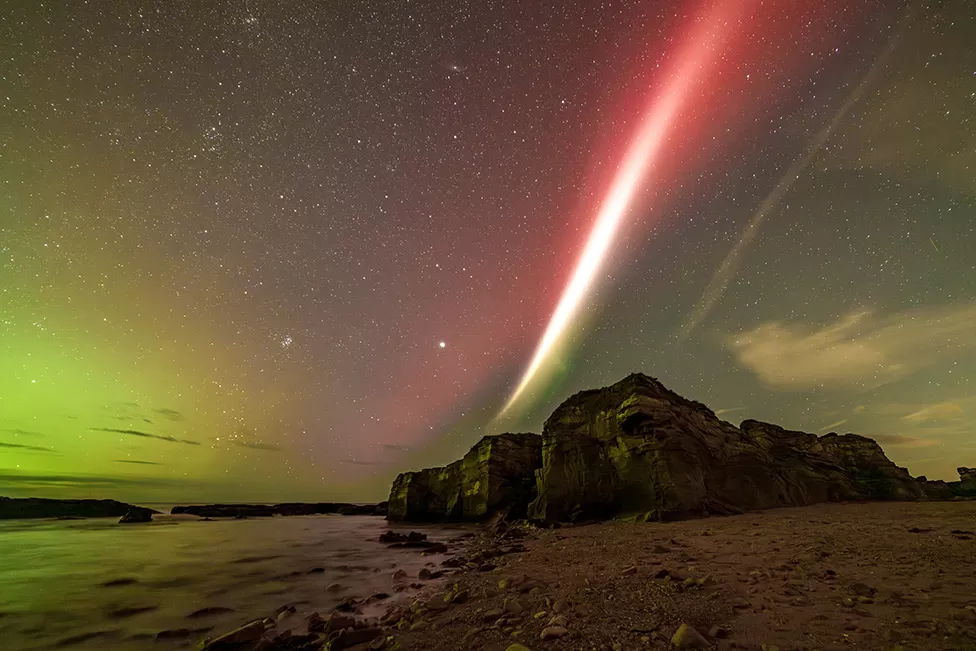On Sunday night, the United Kingdom witnessed some weird sky occurrences. The phenomenon, also referred to as “STEVE,” almost always follows the aurora borealis.

During the late hours of the night, a bright and colorful purple STEVE can be seen cutting across the night sky above Badlands National Park in South Dakota. (Source: Live Science)
STEVE is NEW
According to the NOAA, the lights, known as “Strong Thermal Emission Velocity Enhancement (STEVE),” were recently identified and are similar to the aurora borealis and australis. “STEVE is new,” according to SpaceWeather.com. It’s not an aurora, despite its appearance. The soothing purple glow is caused by hot (5400 degrees F) gas rivers rushing at almost 13,000 mph across Earth’s magnetosphere. These rivers are fueled by strong geomagnetic storms like the one that occurred over the weekend.”
According to Space.com, STEVEs produce a crimson or greenish vertical streak rather than the horizontal ripples of an aurora. STEVEs were rarely photographed until smartphone photography and social media, according to University of Calgary astronomer Eric Donovan. In October, NOAA’s Space Weather Prediction Center found that solar elements that trigger auroras will peak next year and be higher than projected.
The northern lights, often known as the aurora borealis, have long fascinated humans. To generate it, space electrons and protons collide with Earth’s magnetic field. The particles then combine with atmospheric gas molecules to produce the red and green colors of the aurora. The lights can be seen in the far north and extreme south. Aurora australis is the name given to the southern lights. Auroras are formed by electrons and protons, but hot gas ribbons, discovered in 2018, cause STEVEs. According to the Washington Post, “Solar activity is expected to be on the rise over the next few years, researchers say, so there could be good opportunities for the public to spot STEVE.”
READ ALSO: Winter Weather Warnings in US as Snowstorm May Strike

















































